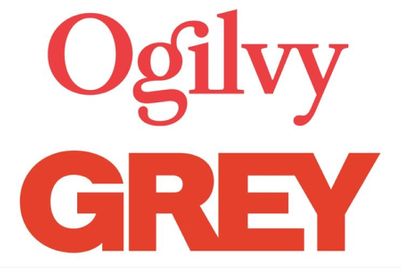.jpg&h=570&w=855&q=100&v=20250320&c=1)
To stay ahead in the ever-evolving beauty space, The Estée Lauder Companies Inc (ELC) recently teamed up with Microsoft to harness the power of generative AI. The 80-year-old beauty brand is leaning on ConsumerIQ, an AI agent built on Microsoft Copilot Studio, streamlining data access for teams. “It’s about bringing answers straight to the fingertips,” says Jayesh Mehta, ELC’s brand tech leader, in a blog post.
Just as marketers were beginning to find their footing in the GenAI era, agentic AI has entered the chat—redefining how AI operates. Unlike traditional GenAI tools that offer suggestions, it empowers autonomous agents to act on behalf of users. Think of it this way: instead of just recommending a movie, it can book tickets in a theatre close to you and suggest healthier snack options.
For marketers, this shift is seismic. No longer are they speaking directly to consumers; increasingly, their real audience is AI itself—tasked with choosing what products or services meet a user’s needs.
Marketers are already leveraging AI for personalised experiences, streamlined workflows, and predictive insights. With agentic AI, the game changes—brands must now optimise their messaging, data, and trust frameworks not just for consumers, but for autonomous AI agents influencing purchase decisions.
To tap this growing need, Netcore Cloud unveiled nine agentic AI agents a month ago to mark a leap from automation to autonomous marketing. The global martech and customer engagement company maintains that these aren’t just tools. Instead, it claims that these are intelligent co-marketers that learn from past campaigns, understand strategic business goals, and independently build hyper-personalised journeys at scale. The promise? More relevance, faster deployment, and exponential uplift in revenue outcomes.
Each of the nine agents is trained to specialise in a core marketing function—from journey orchestration and content generation to visual merchandising and analytics. Together, they operate as a decision-making, self-learning unit. Talking to Campaign, Rajesh Jain, founder and MD, Netcore Cloud said, “Marketers define their goals, and the AI agents autonomously generate actionable plans aligned with the overarching strategy.”
Human guardrails for machine judgment
Netcore says that among the marquee capabilities of these new launches, is its AI-driven segmentation. This expands from the usual four or five groups to “10-100x more segments,” enabling what Jain calls “true marketing to a segment of one.”
But what happens when machines start optimising for performance in ways that may conflict with brand tone or long-term positioning? “To retain brand integrity while leveraging agentic AI, it’s essential to build systems that allow for human oversight,” says Jain.

Netcore’s approach includes a ‘human-in-the-loop’ mechanism that enables traceability and manual overrides. Custom brand kits, tone-of-voice training, and predefined audience segmentation logic are embedded into the AI’s core memory.
“The more teams interact with their AI agent, the more brand-contextualised its decision-making becomes—much like training a new team member.” With AI increasingly acting on behalf of the brand, onboarding becomes not just a technical task but a strategic imperative.
AI twins and the new simulation economy
Before launching a campaign, some marketers are now testing ideas in virtual labs powered by ‘AI twins’—digital personas of real, prospective, or even competitor customers. These simulations assess how various segments respond to variations in messaging, frequency, and delivery channels.

Fashion retailer H&M revealed plans last month to use AI to create digital twins of 30 models for marketing and social media. Models will be compensated and retain control of their likenesses. Similarly, under its GAP 2030 vision, Unilever is overhauling its marketing approach with advanced 3D tools like Nvidia Omniverse. By building digital twins of products—complete with variants, packaging, and language formats—the FMCG company now generates imagery twice as fast, at half the cost, with total brand consistency.
“These AI twins go beyond generic A/B testing—they replicate customer logic and response,” says Jain. He also cited the example of one brand that Netcore is working with, which is using an AI twin platform to test variations at cohort level, identifying which messages work and which miss the mark—leading to far fewer wasted impressions. While still in early deployment, these virtual environments are surfacing insights that challenge assumptions and prevent costly misfires.
The illusion of precision and the reality of bias
The allure of AI lies in its ability to eliminate guesswork. But does relying on algorithmic judgment simply replace one form of intuition with another?
“Gen AI's ability to detect hidden patterns at scale goes well beyond human capability. That said, biases do exist—just like human ones,” Jain concedes. Netcore’s solution is to apply the same governance to AI that would be applied to human teams: “diverse perspectives, robust testing, and scenario-based validation.”
In this hybrid world, human strategy must remain the north star. “Success in marketing has always been outcome-driven. AI campaigns must be evaluated the same way: if performance improves, it becomes the new benchmark.”
While the tech is here, adoption lags—not because of fear, but inertia.
“What holds adoption back is organisational readiness,” Jain explains. “Teams are still figuring out where AI fits, which tasks can be automated, and how to measure success.” Unlike the internet or mobile revolutions, AI has no geographic or economic barrier to entry—but its scope is so broad, and protocols so undefined, that many marketing leaders remain in wait-and-watch mode.
Jain urges leaders to treat AI like a colleague, not a threat. “Just like ATMs redefined roles in banking, AI will allow marketers to focus on higher-value work,” he surmises.
Loyalty > Conversion
AI excels at delivering short-term wins—clicks, conversions, urgency triggers. But can it also build emotional resonance?
“When customers feel understood—not just targeted—they’re more likely to stay loyal,” says Jain. AI-powered campaigns can adapt in real time to a user’s preferences, prior behaviour, and predicted future actions. “We track loyalty not just through clicks or opens but by measuring improvements in CLTV, repeat visits, purchase frequency, and overall retention.”
Done right, AI isn’t just a sales engine. It becomes a memory system—building relationships, not just nudging transactions.
While its full suite of agentic AI tools is still in beta, Netcore has already deployed machine learning-based features such as “affinities.” This predictive capability identifies when a customer is likely to buy, their price sensitivity, and product inclinations—thereby surfacing the perfect offer at the perfect moment.
“This approach not only helps to convert customers to users, but they also become brand-loyal,” Jain notes. Several brands using affinities to segment campaign audiences report noticeable uplifts in ROI.
Websites must be machine-friendly, not just pretty
Gartner predicts that by 2028, a third of website traffic will be AI agents—bots shopping for humans, without human eyes or emotions. That means websites must stop thinking like stores and start behaving like structured data hubs.
“Websites must move beyond traditional user experience models and become intelligent, machine-readable ecosystems,” says Jain. “Many websites today cater to visual browsing; tomorrow’s will need to support automated decision-making.” This will demand clean product feeds, schema markup, and metadata-rich content—optimised for algorithms, not aesthetics.
New KPIs will emerge: conversion rates per bot, latency in AI-to-AI communications, and accuracy of product match. In this agent-dominated world, even brand storytelling must evolve—designed for logic, not sentiment.
The death of display ads? Not quite
As AI agents take over the buyer’s journey, ad formats reliant on emotional storytelling may lose their punch.
“Bots aren’t influenced by brand storytelling. They prioritise efficiency, data integrity, and price-performance ratios,” says Jain. Traditional display advertising—designed to grab human attention—must be re-engineered for machine comprehension.
But he doesn’t believe these are facing extinction. “Display ads will need to evolve. Their survival depends on becoming less promotional, more informational—targeting not sentiment but logic.”
Structured, credible, third-party-validated content will become the most persuasive form of advertising in an AI-mediated marketplace.
From marketers to machine managers
The marketer of tomorrow won’t just be a creative strategist—they’ll be a systems thinker and a prompt engineer.
“Being able to translate strategy into prompts that AI can act upon will be core to execution,” Jain says. “Strategic oversight remains essential, but task execution will be increasingly machine-led.”
Marketers must unlearn the instinct to micromanage and instead focus on curating direction. Jain predicts a future where marketers may be judged “not only by what they know, but the intelligence of the AI agent they manage.”
Because when marketing has a mind of its own, leadership isn’t about control—it’s about collaboration.



.jpg&h=334&w=500&q=100&v=20250320&c=1)


.jpg&h=334&w=500&q=100&v=20250320&c=1)


.jpg&h=334&w=500&q=100&v=20250320&c=1)
.jpg&h=334&w=500&q=100&v=20250320&c=1)

.jpg&h=268&w=401&q=100&v=20250320&c=1)



.jpg&h=268&w=401&q=100&v=20250320&c=1)
+(900+x+600+px).jpg&h=268&w=401&q=100&v=20250320&c=1)


